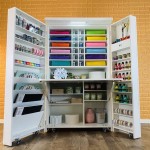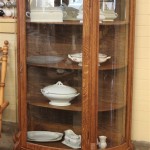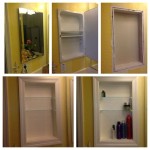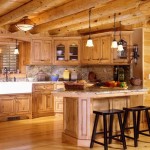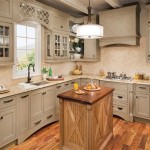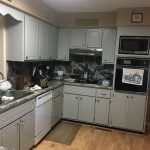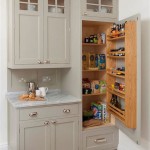How to Put a Sewing Machine in Cabinet Drawers
Integrating a sewing machine into existing cabinet drawers offers a practical solution for maximizing space and maintaining a tidy sewing area. This approach is especially beneficial for individuals with limited space or those seeking a more discreet and organized sewing setup. Successfully implementing this requires careful planning, accurate measurements, and a good understanding of woodworking principles.
The process involves modifying an existing drawer or constructing a new one specifically designed to accommodate the sewing machine. This includes creating a stable platform, ensuring proper ventilation, and considering accessibility for both operation and maintenance. By carefully considering these factors, it’s possible to create a functional and aesthetically pleasing sewing station within a standard cabinet.
Before commencing the project, a thorough assessment of the sewing machine's dimensions and weight is necessary. This data will dictate the size and construction of the drawer and any necessary support structures. Additionally, the location of power outlets and the user's ergonomic preferences must be taken into account to ensure a comfortable and efficient sewing experience.
Planning and Preparation
The initial step is to meticulously measure the sewing machine, including its length, width, and height, paying close attention to any protruding parts like the handwheel or power cord connections. Add a few extra inches (approximately 2-3 inches) to each dimension to allow for ease of placement and removal. These measurements will serve as the basis for determining the internal dimensions of the drawer.
Next, evaluate the existing cabinet and its drawer structure. Consider the cabinet's construction materials, the drawer's weight capacity, and the type of drawer slides used. If the existing drawer is not strong enough to support the weight of the sewing machine, reinforcement or replacement might be necessary. Determine the available space within the cabinet to ensure the modified or new drawer can be fully extended without obstruction.
Consider the placement of the sewing machine within the drawer. Will it sit flush with the drawer's top edge, or will it be slightly recessed? Recessing the machine can provide a more stable sewing surface and reduce vibrations. If recessing, accurate measurements of the machine's base are critical to creating a snug and secure fit.
Procure all necessary materials and tools. This may include lumber (plywood or solid wood), drawer slides (heavy-duty recommended), screws, wood glue, sandpaper, a measuring tape, a level, a saw (circular saw or table saw), a drill, a screwdriver, and clamps. Safety equipment, such as safety glasses and ear protection, is also essential.
Sketch a detailed plan of the drawer, including dimensions, material thicknesses, and the placement of any support structures. This plan will serve as a guide throughout the construction process and help prevent errors. Consider creating a 3D model using software to visualize the final product and identify potential issues.
Think about providing power to the sewing machine. If there is no pre-existing outlet inside the cabinet, it may be necessary to either install one or route a power cord safely to the machine. Ensure that all electrical work complies with local building codes and regulations. Power strips with surge protection offer an additional layer of safety.
Construction and Installation
Based on the measurements and plan, cut the lumber to the appropriate sizes for the drawer's sides, front, back, and bottom. Use a saw to make precise and clean cuts, ensuring that all edges are square and free of splinters. Accuracy in this step is crucial for creating a well-fitting and functional drawer.
Assemble the drawer box using wood glue and screws. Apply glue to all joining surfaces and clamp the pieces together to ensure a strong and durable bond. Drive screws through the sides and into the front and back pieces, ensuring they are countersunk to prevent them from protruding. Allow the glue to dry completely before proceeding.
Reinforce the drawer bottom if necessary. Depending on the weight of the sewing machine, the bottom might require additional support. This can be achieved by adding runners beneath the bottom panel or by using a thicker material for the bottom itself. Ensure the reinforcement doesn't interfere with the drawer slides.
Install the drawer slides onto the sides of the drawer and the inside of the cabinet. Use the manufacturer's instructions for proper placement and alignment. Ensure the slides are level and securely fastened to both the drawer and the cabinet. Misaligned slides can cause the drawer to stick or bind.
Carefully slide the drawer into the cabinet, testing its movement. Ensure it opens and closes smoothly and that there is sufficient clearance for the sewing machine. If the drawer sticks or binds, adjust the slides as necessary. Check that the drawer fully extends and provides easy access to the sewing machine.
If recessing the sewing machine, create a platform within the drawer with a cutout that matches the machine's base. This platform can be constructed from plywood or solid wood and should be securely attached to the drawer bottom. Ensure the cutout is precise to provide a snug and stable fit for the machine.
Consider adding padding or felt to the platform and drawer bottom to reduce vibrations and noise. This can also help protect the sewing machine from scratches and damage. Secure the padding with adhesive or staples, ensuring it doesn't interfere with the machine's operation.
Ensuring Functionality and Safety
Check for adequate ventilation around the sewing machine. Overheating can damage the machine, so ensure there is sufficient airflow to dissipate heat. This may involve drilling holes in the back of the drawer or cabinet or leaving a small gap around the machine.
Implement a system for cord management. Secure loose cords to prevent them from becoming tangled or creating a tripping hazard. Cord organizers or clips can be used to keep the cords neatly arranged and out of the way. Consider adding a grommet to the back of the drawer for the power cord to pass through.
Test the sewing machine within the drawer. Ensure it operates smoothly and without any interference from the drawer or cabinet. Check that the machine is stable and does not vibrate excessively. Adjust the platform or add additional padding if necessary.
Consider adding a safety latch to the drawer. This can prevent the drawer from unexpectedly opening while the sewing machine is in use or being transported. A simple magnetic latch or a more sophisticated locking mechanism can provide added security.
Regularly inspect the drawer and its components for wear and tear. Check the drawer slides, screws, and platform for damage or loosening. Tighten any loose screws and replace any damaged parts promptly to maintain the functionality and safety of the sewing station.
Ensure proper lighting is available. If the cabinet is located in a dimly lit area, consider adding an additional light source to illuminate the sewing machine. This can improve visibility and reduce eye strain. LED lights are a good option as they are energy-efficient and produce minimal heat.
By following these steps, an existing cabinet drawer can be transformed into a dedicated and functional sewing machine storage and workspace. The result is a more organized, space-efficient, and aesthetically pleasing sewing area.

Upcycled Sewing Machine Drawers Confessions Of A Serial Do It Yourselfer

How To Turn A Sewing Table Into Dressing

How To Convert An Old Sewing Cabinet Or Table Hold A New Machine Ehow

Upcycled Sewing Machine Drawers Confessions Of A Serial Do It Yourselfer

Turn A Sewing Table Into Bar Cart Chica And Jo

10 Ways To Use Vintage Sewing Machine Drawers In Home Decor My Sweet Living

Upcycled Sewing Machine Drawers Confessions Of A Serial Do It Yourselfer

Repurposed Sewing Table Upcycled Into A Desk The Diy Dreamer

9 Sewing Tables For Your Machine Heather Handmade

Singer Sewing Machine Stand Antique Makeover
Related Posts

